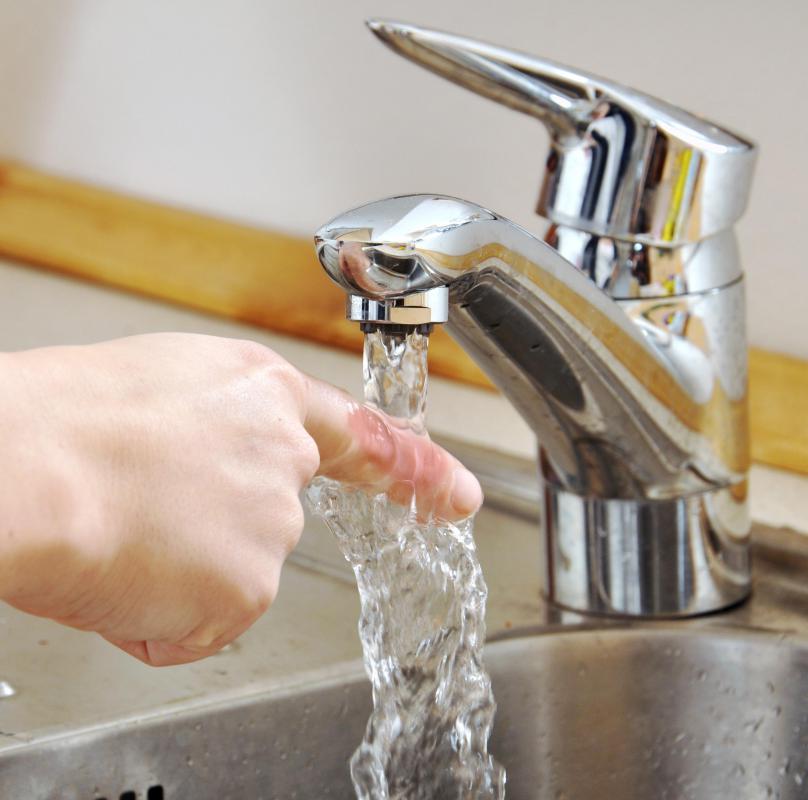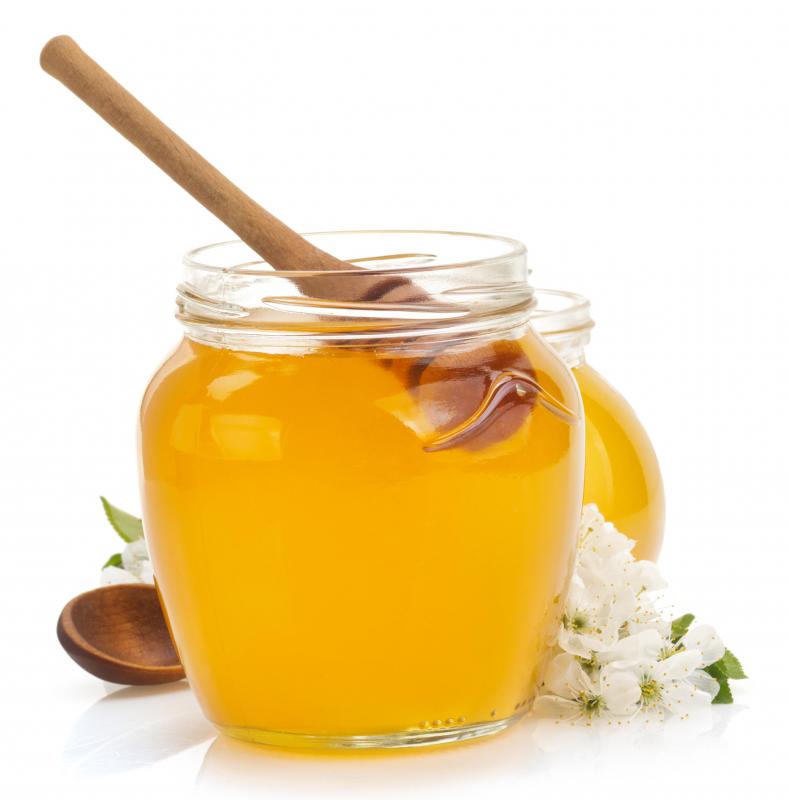At TheHealthBoard, we're committed to delivering accurate, trustworthy information. Our expert-authored content is rigorously fact-checked and sourced from credible authorities. Discover how we uphold the highest standards in providing you with reliable knowledge.
How Can I Treat Curling Iron Burns?
You can usually treat curling iron burns like any other thermal skin burn, depending on their severity. Immediately applying cold water and then using a topical remedy can generally heal mild first-degree burns. Most burns of this type are gone within a few days. Second- or third-degree burns, however, typically require medical attention, as these burns are more likely to cause blisters and serious skin damage. Using a curling iron safely, such as keeping the temperature setting low and unplugging it when not in use, can help you avoid burns.
Curling iron burns can occur on your face, neck, hands, and virtually anywhere else that is subject to burn. People often burn their foreheads or faces when using a curling iron to style their hair. They can also burn their fingers by unintentionally touching a hot iron that does not have a protective tip. Children and others may burn their hands by accidentally touching a hot iron left within reach.

To treat the burns, the first action suggested by most medical professionals is to minimize the potential burn damage by stopping the heat. They advise putting cold water on the burn for at least 20 minutes; you can either submerge the area in cold water or apply a cold compress for up to 30 minutes. If you believe that the burn is mild, you can wash the area with antibacterial soap or a gentle cleanser that contains moisturizers.

For pain relief, many doctors recommend applying pure aloe vera. You can use a gel or the juice from the leaf of an aloe vera plant, which may also help prevent blisters. If there is no open wound, you can try using another mild skin lotion. Taking ibuprofen or other anti-inflammatory might also relieve some pain. To avoid potential complications, however, contacting a doctor is often advised prior to administering such medications to children.

Generally, you should not apply ice directly to curling iron burns because it can cause additional damage to burned skin. Most experts also caution against using powder, butter, or any other grease to treat burns. There is little evidence that they help and, in many cases, they can harm the skin. Some people use honey or another home remedy, and there are conflicting reports about the effectiveness of such treatments. When in doubt, someone with a serious burn should seek medical advice.

Many people feel self-conscious and try to hide a curling iron burn. Wearing a hat, scarf, or other protective covering is a common option, yet care should be taken to avoid rubbing or otherwise irritating the burned area. When trying to hide a burn by applying makeup, many people make it worse by getting bacteria in the wound, so this practice should usually be avoided.

There are several ways to avoid curling iron burns. One is to choose a curling iron with a rubber or plastic tip to avoid finger burns. Furthermore, most people can use a lower heat setting and still style their hair effectively. To ensure curling iron safety at home, it is recommended that you keep the styling tool away from children who could burn themselves by accident. Ideally, a curling iron should be unplugged and put away when not in use.
Complications of Burning
Even if treated correctly, there are possible complications of burns. Damage from burns can cause infection and in some cases dehydration. Monitor all burns for signs of infection and stay hydrated.
Burns can cause muscle and tissue damage. This includes tightening of the skin in the affected area, which can reduce the mobility of the area. Therefore, curling iron burns on the neck or face could pose long-term issues.
If you are concerned about infection or tissue damage, see a physician as soon as possible.
What Are Ways to Prevent Scarring?
There are multiple ways to react when a curling iron accidentally burns a neck that can prevent scarring. As stated, the immediate response to a curling iron burn is to rinse the area with cold water. Not only will it feel relieving, but it helps the burned skin cool off.
Sometimes the burns go a little too deep, and if not treated, they can scar. The best course of action is to rub antibiotic ointment on the burn as soon as possible. Antibacterial cream will help with the healing process and pain relief.
Covering the area once the ointment lathers into the skin is crucial to keep the wound clean. The chances of infection become slim, and the skin will recover faster.
Few measures prevent scarring, although most curling iron burns don’t go past a first degree. Therefore, scarring is unlikely to be an issue.
Scarring is only a concern for the second-degree burn, which isn’t common but results if the iron touches the skin for too long. If there is blistering, do not pop the blister. Cutting it open can result in scarring. Allow the blister to pop on its own.
Most importantly, keep the area clean, bacteria-free, and covered so it can heal properly and give the best chance of preventing a scar. If the area is bare skin, such as on the neck, keep it covered with clothing or a non-stick bandage.
What Are Some Alternatives to Curling Irons?
While curling irons are an efficient and reliable way to curl hair, some people are prone to accidents and constantly end up with burns on their necks. These burns are annoyingly painful and can leave burn marks and scars.
There are multiple ways to curl hair that doesn’t involve such intense heat. An obvious one is hair curlers, but there are some other not-so-obvious tips for curling hair that won’t leave marks on someone’s neck.
Using a rag or t-shirt overnight to wrap hair around can create soft, heat-free curls in the morning. The only issue is comfort during the night, but there are plenty of efficient and comfy options. Some curling sets made for this exact purpose are available, which are easier to use and more productive than a t-shirt.
Another overnight remedy is leaving hair up in a bun or twisted in a braid. The hair ends up wavy or curly in the morning after leaving it in this position the whole night.
These alternatives reduce the risk of curling iron burns and help keep hair healthier and less dried out.
What Are Some Tips To Keep From Burning Yourself?
If heatless curls don’t work, there are several ways to prevent curling iron burns. While several items can physically prevent them, some tips don’t require extra money.
Allowing enough time to carefully and slowly curl hair is important. Rushing through only leaves more opportunities for burns. Take care, the heat will be felt before it touches the skin, providing a warning to stop and pull the curling iron away.
Curling hair in front of a mirror is another tip. Using the mirror, you can observe and track the curling iron and keep it away from the skin.
Use the curling iron away from the face. Keeping it tight leaves it right next to the neck and is an easy way to get an accidental burn.
Conclusion
Curling iron burns are painful and frustrating to hide, but treating them quickly and correctly is the best way to help the pain, allow them to heal more rapidly, and prevent scarring.
AS FEATURED ON:
AS FEATURED ON:















Discussion Comments
I burned my finger this morning and its turning red but there's nothing there but red and pain.
I sustained a curling iron burn to my under eye area on Saturday night. It hurt terribly and the skin turned very red. It was a first degree burn - intact skin with no blisters. I put a cold compress to the area for 20 minutes, gently cleaned it and applied antibiotic ointment. The key was to keep it moisturized. I continued applying antibiotic ointment until I was sure the skin wasn't infected and then I applied a high percentage of Aloe Vera gel to the area, keeping it moist.
I did not apply any makeup to the area. The skin turned an ugly dark color as it healed. On Wednesday night (four nights post burn), the dark burn area sloughed off on its own. Yay! The skin underneath is pink but healthy with no scars.
Aloe vera gel is great for burns. I use an over-the-counter aloe vera gel ointment with lidocaine pain reliever in it. I think it's the best first aid treatment for burns.
@alisha-- At least you burned your hand and not your face! I burned my face once with a curling iron and it was so bad!
I'm sure that there are scar creams at the pharmacy. I personally use vitamin E oil to prevent scars from burns and cuts. But wait until the burn has scabbed over. You should not apply too much stuff to broken skin. Don't cover the burn either, keep it dry and open so that it can heal.
I burned my hand by accident while curling my hair last week. I didn't think it was serious, but then it started to hurt very badly after a few minutes. I washed it with cold water and applied some antibiotic cream on it but it continued to hurt. I was in pain for about three days. Now, I don't have pain, but the burn has turned brown and it looks like there is going to be a scar there.
What can I do to prevent a scar?
Post your comments